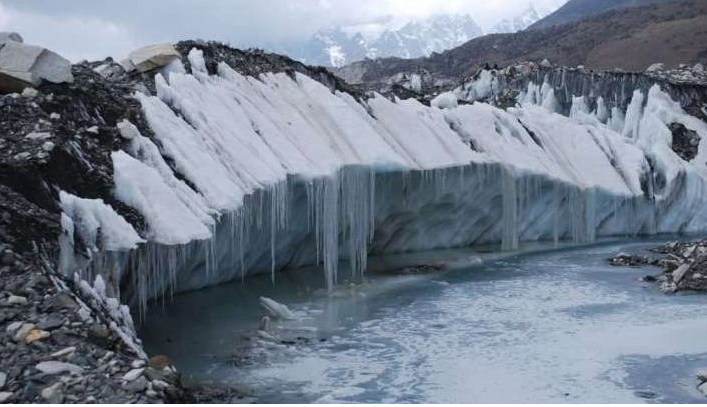The Western Himalayan Glaciers: Melting Sentinels of Climate Change
The melting of Western Himalaya glaciers has profound socio-economic implications for local communities
Post by SUHAIL AHMAD on Monday, June 19, 2023

The Western Himalayas, a magnificent mountain range that spans several countries, is home to some of the world's most awe-inspiring glaciers. These glaciers, with their vast icy landscapes, hold immense significance for both the local communities and the global environment. However, these frozen wonders are under threat from the impacts of climate change. In this article, we delve into the importance of the Western Himalaya glaciers, the factors contributing to their decline, the environmental consequences, and the urgent need for action to preserve these fragile ecosystems.
Glaciers in the Western Himalayas are formed through a slow and steady accumulation of snowfall over many years. The weight of the accumulated snow compresses the lower layers into ice, forming glaciers. These colossal bodies of ice serve as natural reservoirs, storing freshwater and regulating its release over time. They are essential contributors to the region's hydrological system, feeding major rivers like the Indus, Ganges, and Brahmaputra. The reliable flow of water from these rivers sustains agriculture, hydropower, and the livelihoods of millions of people downstream.
The Western Himalayas glaciers have been experiencing a rapid retreat over the past few decades. The primary driver of this retreat is global warming, which has caused rising temperatures in the region. Warmer temperatures accelerate the melting process, leading to glacial mass loss. The increased frequency and intensity of heat waves and altered precipitation patterns further exacerbate the situation. As a result, the glaciers are shrinking, losing thickness, and retreating at an alarming rate.
The consequences of melting Western Himalaya glaciers extend beyond their immediate surroundings. Reduced glacial meltwater affects the timing and quantity of water flow in downstream rivers. This disruption can lead to water scarcity, affecting agriculture, hydropower generation, and overall water availability for domestic and industrial use. The loss of glaciers also impacts delicate ecosystems, disrupting biodiversity and endangering numerous species that depend on the unique glacial habitat. Moreover, the increased risk of natural disasters such as glacial lake outburst floods (GLOFs) poses significant threats to human lives and infrastructure in the region.
The melting of Western Himalaya glaciers has profound socio-economic implications for local communities. Agriculture, a primary source of livelihood, heavily depends on glacier meltwater for irrigation. The reduced availability of water affects crop productivity and food security, leading to economic instability and potential social unrest. Additionally, hydropower projects, which rely on consistent glacial melt for electricity generation, face challenges due to reduced water flow. The declining glacial resources also impact tourism, which contributes significantly to the regional economy. These cascading effects further exacerbate poverty and inequality.
Scientists and researchers have been closely monitoring the Western Himalayan glaciers to better understand their behaviour and the impacts of climate change. This monitoring involves studying the glaciers' size, mass, movement, and surface characteristics using various remote sensing techniques and on-site measurements. Additionally, research expeditions gather valuable data on meteorological parameters, glacial hydrology, and the interactions between glaciers and surrounding ecosystems. Such scientific endeavours provide crucial insights for policymakers, enabling them to make informed decisions and implement effective mitigation and adaptation strategies.
(Author is M.Sc. PhD (Pursuing) from University of Jammu and Junior Research Fellow NRSC ISRO